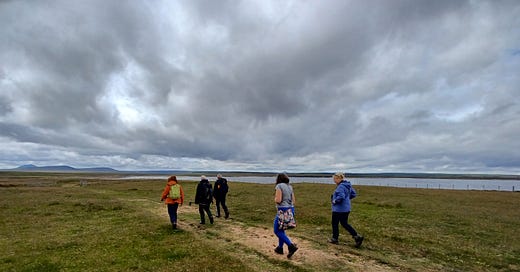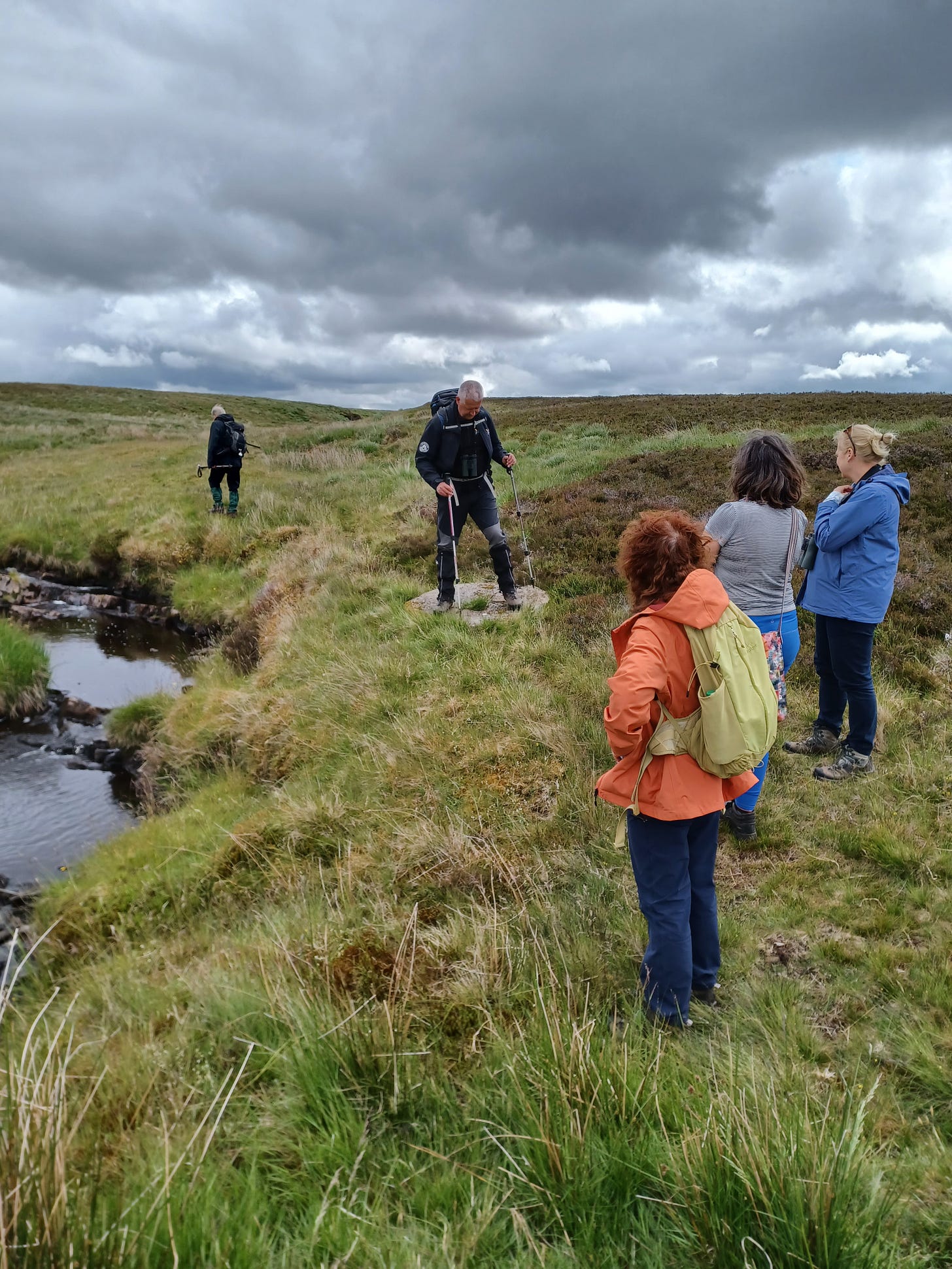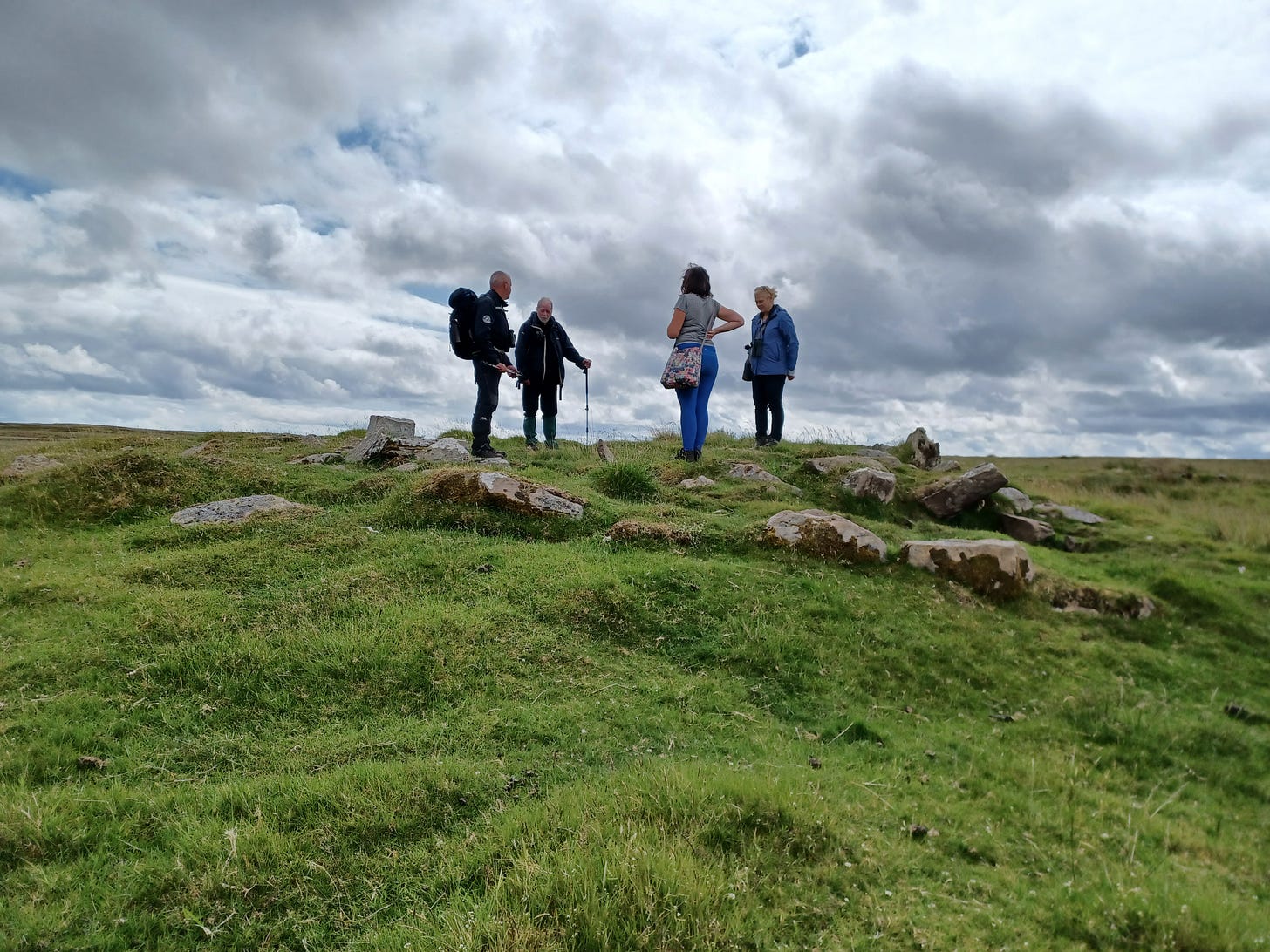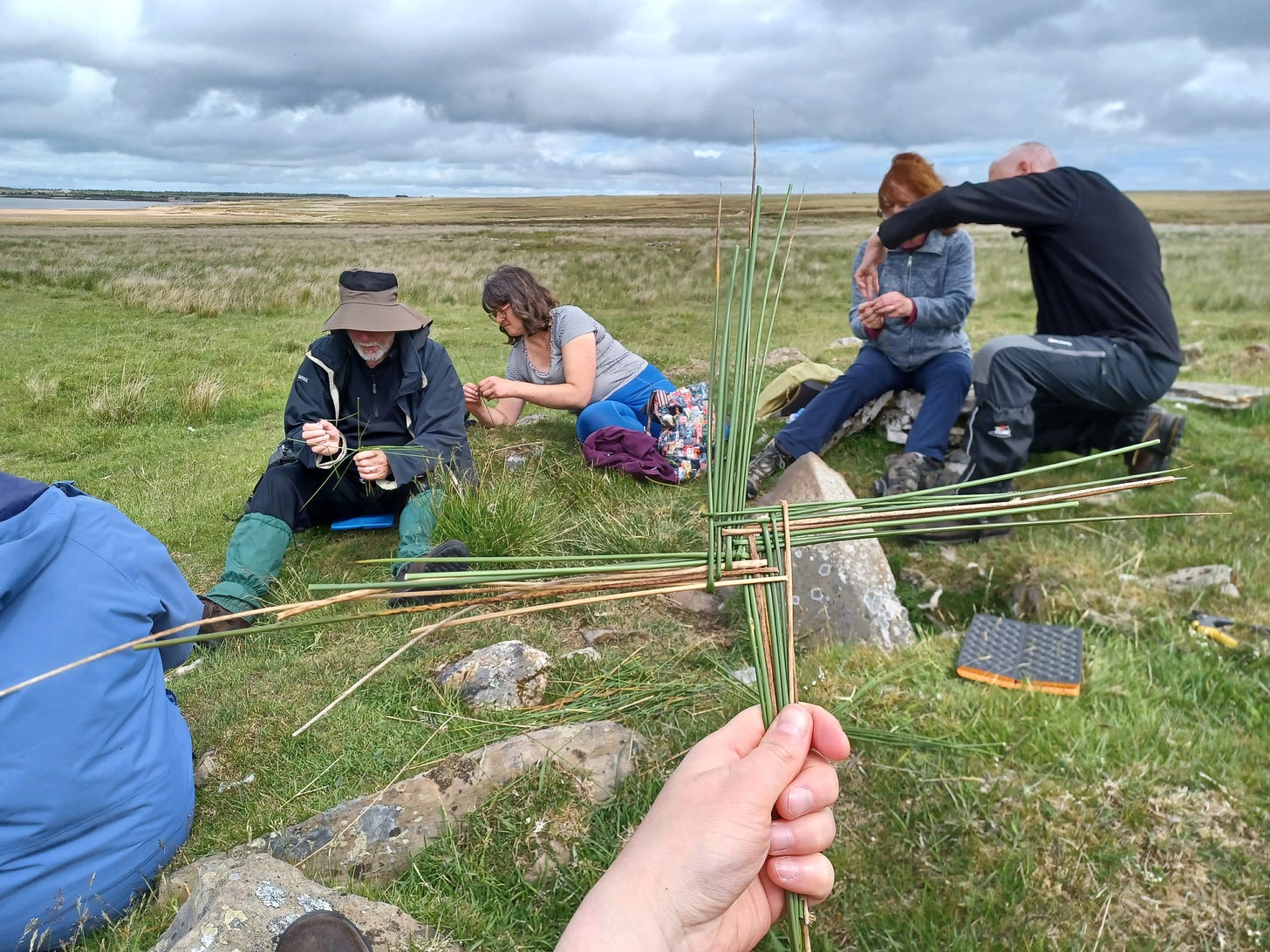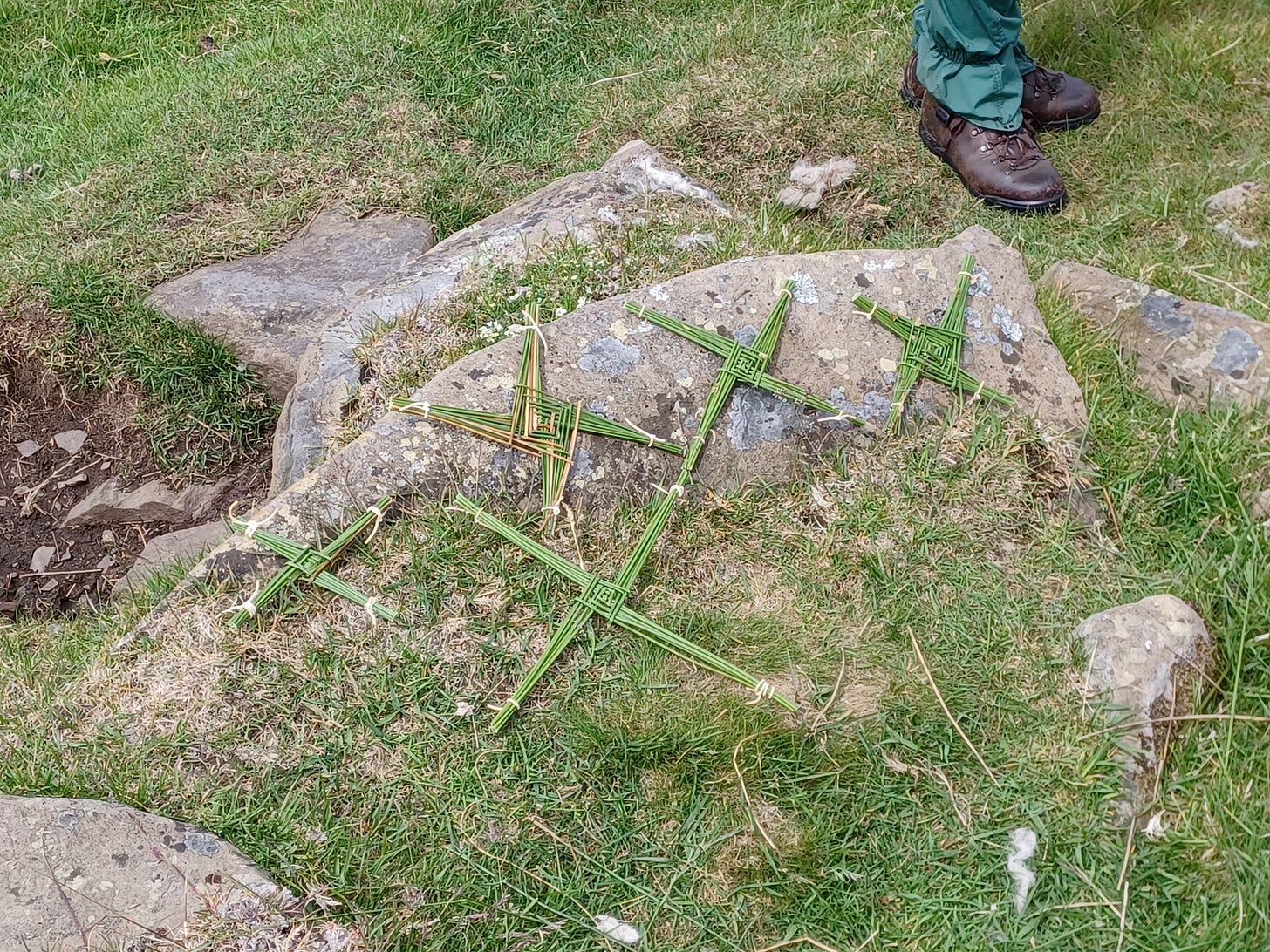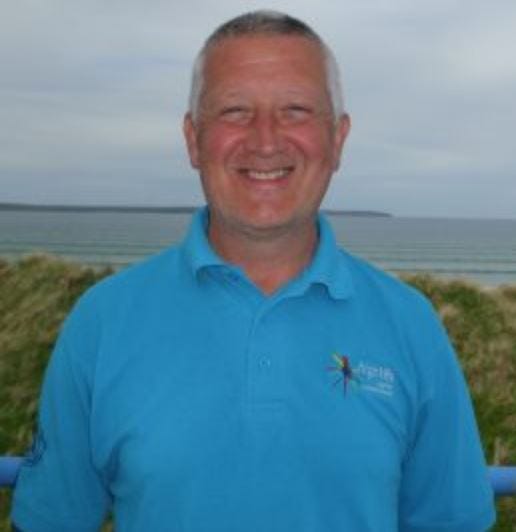A recent guided walk I led out by Loch More in north Caithness, followed part of an established but these days lesser known medieval pilgrimage route. This traditional pilgrimage route links St Duthac of Tain to St Magnus of Kirkwall. This route is now known as the Northern Pilgrims’ Way and further details can be found at the following link Northern Pilgrims' Way
Five folks kindly joined me, to discover firsthand just a short section of this once well-travelled route and also to enjoy a few hours in the open countryside. One person even travelled from Inverness, just to take part. This short, guided walk (5km) would lead us to the old settlement of Achscoriclate and the remains of St Briget’s chapel and well, along the south shore of Loch More.
We met by the Loch More cottage at Strathmore, just at the headwaters of the Thurso river. Due to recent dry weather the levels were well down on the Loch and so consequently on the river, much to the annoyance of any anglers, I suspect. Following the customary introductions and explanation of the route, we set off along the track and over the bridge on the south edge of the loch.
The sun shone and the ground was dry, always a good start. Within a couple of hundred metres, we were delighted by the wonderful sight of a hunting osprey over the loch. We watched for some time as the bird hovered, moved and hovered again over a large area, but unfortunately it never plunged to catch a fish. So it wasn’t just human fishermen unsuccessful today.
Further on, the plaintiff whistle of a golden plover greeted us, followed by the ‘check and weet’ alarm call of a female wheatear, perched on the wire fence. At the Allt nam Beist burn, which once powered a watermill, we came across the old millstone lying at the side of the track. Some low grassy mounds nearby are all that remain of the mill itself. Whilst looking at the millstone a super-quick flypast by a merlin was our next wildlife treat.
Nearing Achscoriclate, a strange looking pattern in one of the stones in the track surface took my eye. I’m not sure what the pattern could be. Maybe just a random shape formed from folding in the metamorphic rock? If anyone can explain this curious shape I would be pleased to hear?
We soon headed away from the track through a section of rushes over towards the remains of St Bridget’s chapel. As with many archaeological sites in the far north, all that remains are a pile of large stones, showing a definite building pattern arrangement. This would undoubtably have been a site visited by folk on pilgrimage in medieval times. Perhaps food and shelter may have been offered at the chapel for any weary dedicated pilgrim.
Unlike the chapel, the well site is in good order and still retains water to this day. As this was a sainted site, pilgrims would most likely have partaken of the waters and perhaps even collected some to take to a sick relative or friend. Many pilgrims carried dedicated small vessels for this very purpose, know an ampulla. Ampulla were often made of lead or ceramic and sometimes highly decorated with religious imagery. Still to this day, lead ampulla are often found by metal detectorists.
To round of our visit to the chapel and well site, everyone crafted their own St Bridget’s cross, whilst following instructions given by me. These simple crosses are traditionally made using rushes, which were readily available in the damp ground at Achscoriclate. Permission to cut a few handfuls of rushes was kindly given by the estate keeper prior to the walk.
To make the cross, each length of rush is folded over a previous length and turned to create a decorative cross shape. This process is simple but requires concentration to hopefully produce a well-made example. Finally the last rush is secured under a previous length to stop the whole thing falling apart. The long rush ends are then tied together and cut to create equal lengths.
Our short pilgrimage ended with everyone safely back at their vehicles after returning via the same route. My thanks go to the Northern Pilgrims' Way Group, particularly Jane Coll, to Foudation Scotland whose funding subsidised this walk, to Ulbster Estate and also a special thanks to everyone who chose to join me on this wonderful walk. An excellent day of fascinating history, wonderful wildlife, good weather and very pleasant company.
Paul Castle is the dedicated Countryside Ranger for North Sutherland and North Caithness with High Life Highland. Paul has devoted over two decades, to the ranger service of this area. His commitment reflects his love for the area, marked by its breathtaking landscapes, diverse wildlife, friendly communities and rich natural heritage. Paul's work plays a pivotal role in promoting and protecting the wildlife, flora, and fauna that make this part of Scotland so extraordinary


